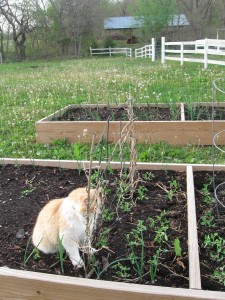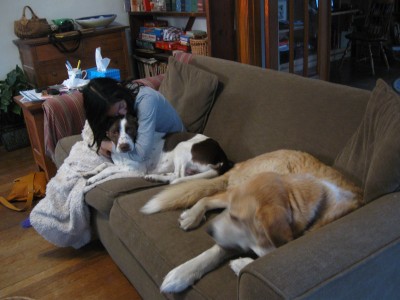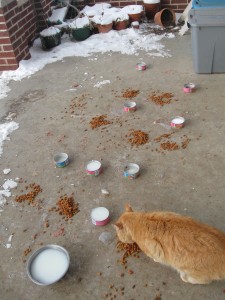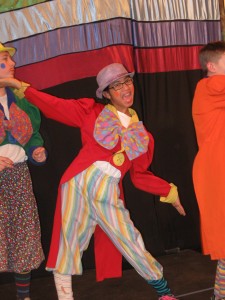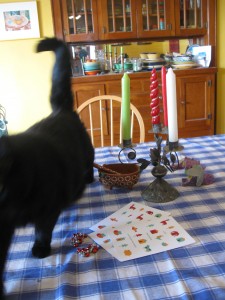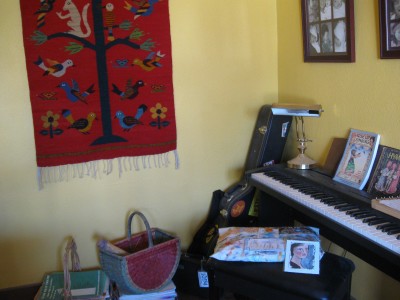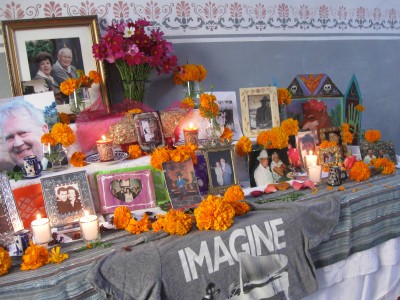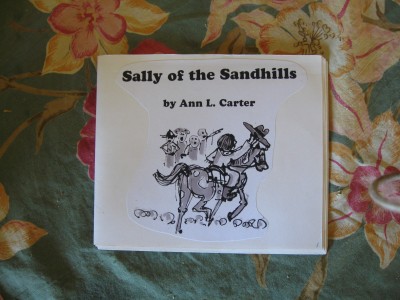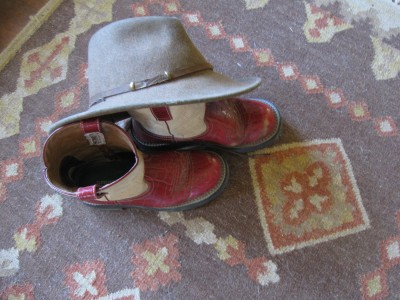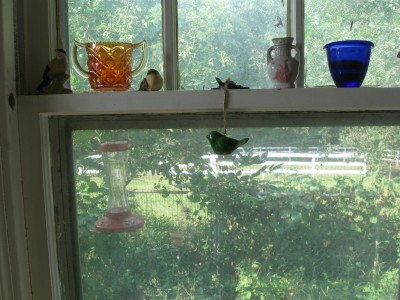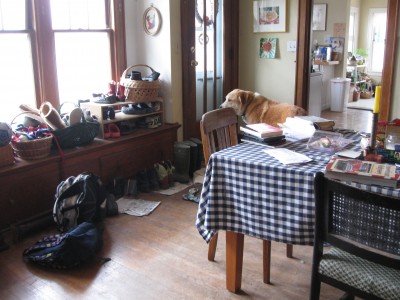Helen knows me pretty well after all these years. Yesterday she said, “You’d be happy if you had a little piece of land with Jack and just puttered around gardening all day, wouldn’t you?” When I nodded (well, really, what could be better, unless Jack didn’t wander off), she just shook her head with that, “It takes all kinds” look.
If you’ve been reading my blog since last July, you will remember that I can take great pleasure in an abundance and variety of weeds in what’s supposed to be a vegetable garden, but this year I have turned over a new leaf—-huh, unplanned pun. I have three raised beds that Wayne built last fall. I should mention here that this more than makes up for him “accidentally” mowing over flowers newly transplanted into areas not exactly designated for such use. His exact words upon my horror were, “Oh, sorry, I thought I saw some flowers in front of the mower.”
But back to the veggie beds. After much research with many contradictory suggestions, I went with the “lasagna” approach, which is alternating layers of “browns” (carbon sources) and “greens” (nitrogen sources) found in things around the home, like kitchen compost, dry leaves, and herbivorous animal manure—Jack, time to change your diet. I liked this idea as it was easily adapted to mean throw anything that will more or less decompose and is organic into the beds. Rose and I also got some worms at a bait shop and I felt quite happy saving them from fishing hooks, tossing them into the soft earth while saying, “Free Willie”.
So all is going well and I even escaped loss during the very late cold we had, except for some blacked basil and pepper leaves—growing up in Kansas, I knew better than to trust the “average” last frost date. But there is a problem with the cats. They like to lie in the lettuce. Sitting I can sort of take, but in the photo above, one of the twins (I can never remember which is which, Carmel or J.J.) is obviously eying out a good napping spot in the lettuce bed, just beyond the sprouting sweet pea pods. And when cats lie down, they may not get up for quite a while.
Last year, in my garden that gave visitors a sense of superiority, I let it all go, as in animals and bugs and weeds could have at it. But not this year. I didn’t do all this to have my lettuce squashed (and the puns just seem to keep coming) by cats. There is a point where that line of being able to let it go is crossed.
Several years back it got bad where I worked. Things happened that were just wrong and when I got upset, some people told me to “quit thinking about it and focus on other things” , to “let it go”. But I didn’t, I couldn’t. And as a result, I became the enemy (along with others of the same mind) to those I had questioned, the problem that needed to be gotten rid of. I don’t work there anymore and I’ve never, ever regretted that I stood my ground. It was one of those times when I couldn’t just lie in the lettuce.
So that’s my new saying—“Lying in the Lettuce”. It means that something is too much or too important to forget about and you need to get up from the vegetable bed (or in the current case, do something to make the cats get up). And if you can somehow make the stretch from wilted lettuce to tired legs, then think of my favorite hero, Rosa Parks, who decided there was no lying in the lettuce or sitting in a back seat on that day in 1955.
The truth be told, I likely won’t worry too much about where the cats nap. Unlike last year, there’s plenty of “gourmet green variety” to share with all, whatever the purpose. It’s about what I don’t want to become, while puttering around in my garden. I don’t want to become so complacent that I forget about the line that needs to be drawn in the dirt, whether it’s the dirt in my happy worm mix or the dirt out in the world. It’s about knowing when to let it go and when to take a stand. And that’s something I want to remember on this Memorial Day, 2014. So to celebrate, I’m going to pick some fresh greens for lunch. It really is a shame that Jack won’t eat lettuce.
